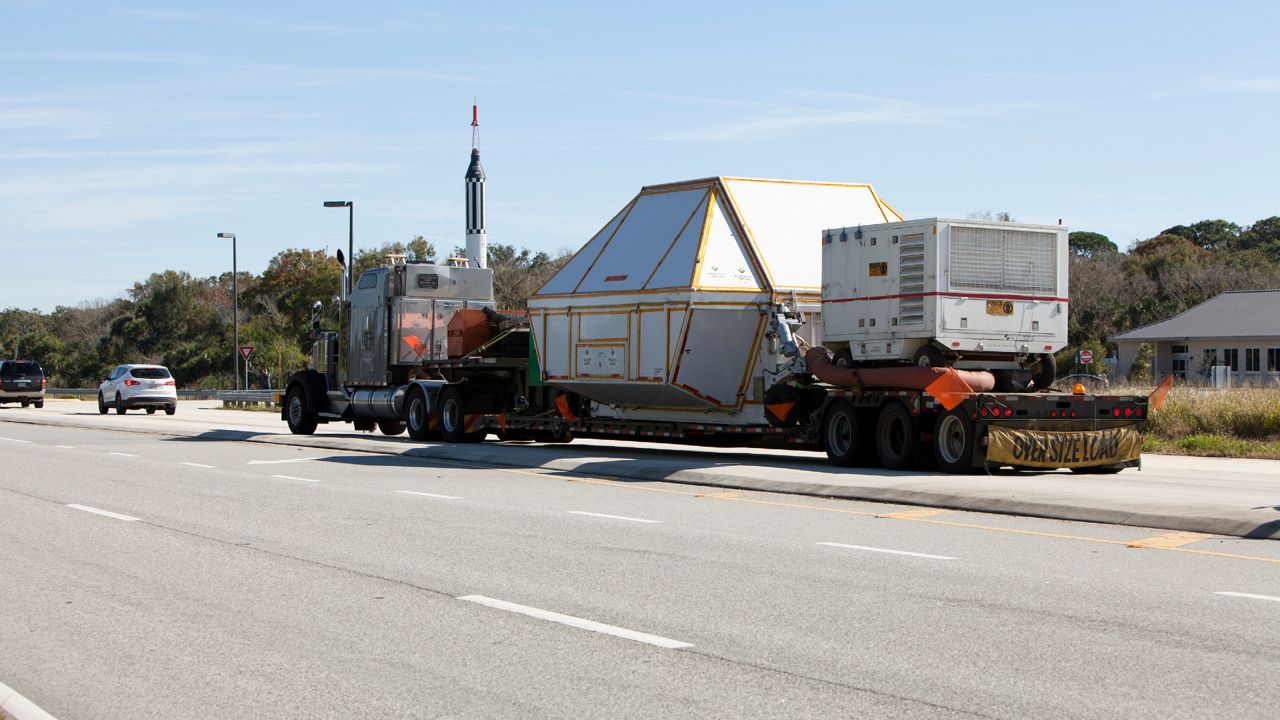MERRITT ISLAND, Fla. — A 1.4-million-mile trip around the Moon and back ended with a Pacific Ocean splashdown for NASA’s Orion spacecraft on Dec. 11. But before it’s journey fully comes to a conclusion, Orion will make its way back to Kennedy Space Center in Florida from whence it launched on Nov. 16 to mark the beginning of the Artemis I mission.
What You Need To Know
- The Orion spacecraft launched as part of the Artemis I mission on Nov. 16
- Once back in Florida, Orion will be checked out and some of its avionics will be removed for transfer into the Orion spacecraft for the Artemis II mission
- 2022 marked the second flight and splashdown for an Orion spacecraft after it had a test launch in 2014
- More Destination Space
On Monday, at least one lucky space fan caught a glimpse of Orion’s terrestrial journey back to the Sunshine State. New Mexico resident Craig Schinnerer snapped a picture and video of the Recovery Transportation Fixture as it headed down Highway 62 Monday morning.
Space Coast residents may recall seeing the RTF back in 2014 around the time the Orion spacecraft first launched as a part of the Exploration Flight Test-1 mission aboard a Delta IV Heavy rocket.
NASA photographer Dimitri Gerondidakis snapped a picture of the transport heading towards KSC just over eight years ago this month.

During a July episode of the NASA podcast “Houston We Have a Podcast,” Artemis I Recovery Director Melissa Jones said it’s not a quick process from getting the Orion spacecraft offloaded from the U.S.S. Portland and ready for its road trip.
“So, we only are trying to get it in a configuration where it's safe to transport across the country. And once all the pre-transportation processing requirements are fulfilled, which is about 40 hours, and we work 12-hour shifts so it's just a couple of days, we put it on a flatbed truck, and we connect, inside of a recovery transportation fixture, and we connect a purge to it, and we connect a system that monitors temperature and flow rate for hazards, like hydrazine leaking, anything like that, and basically, we have a team that drives with it back across the country,” Jones told podcast host Gary Jordan.
Jones noted during the podcast that crews weren’t going to do excess work at Naval Base San Diego after Orion was offloaded from the U.S.S. Portland earlier this month.
“We don't do extra testing, sampling, anything like that on base because the goal is to get the capsule home as quick as possible, because parts of this capsule, Artemis I capsule, is going to be reused for Artemis II, like a lot of the avionics,” Jones said in the 2021 podcast.
In a NASA blog post on Dec. 14, the agency noted that after opening Orion’s hatch to prepare for the journey home, they removed the Biology Experiment-1 payload, which they said “allows scientists to begin their analysis before the samples begin to degrade.”
Once Orion returns to KSC, it will head to the Multi-Payload Processing Facility. There, teams will offload additional payloads, like Snoopy, the zero-gravity indicator for the Artemis I mission; Commander Moonikin Campos; and the flight kit.
An arrival date in Florida hasn’t been announced, but NASA said in a Dec. 21 blog post that it’s expected to return to the Sunshine State by the end of the year.



